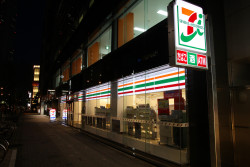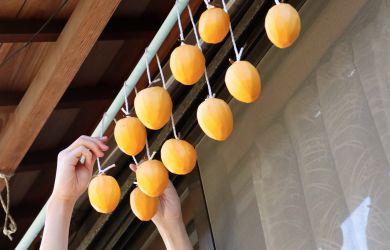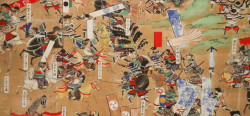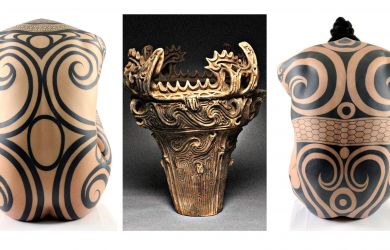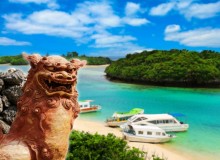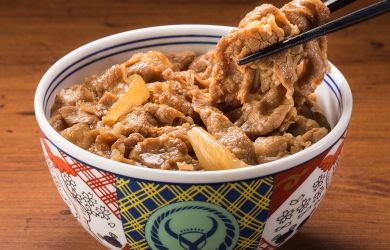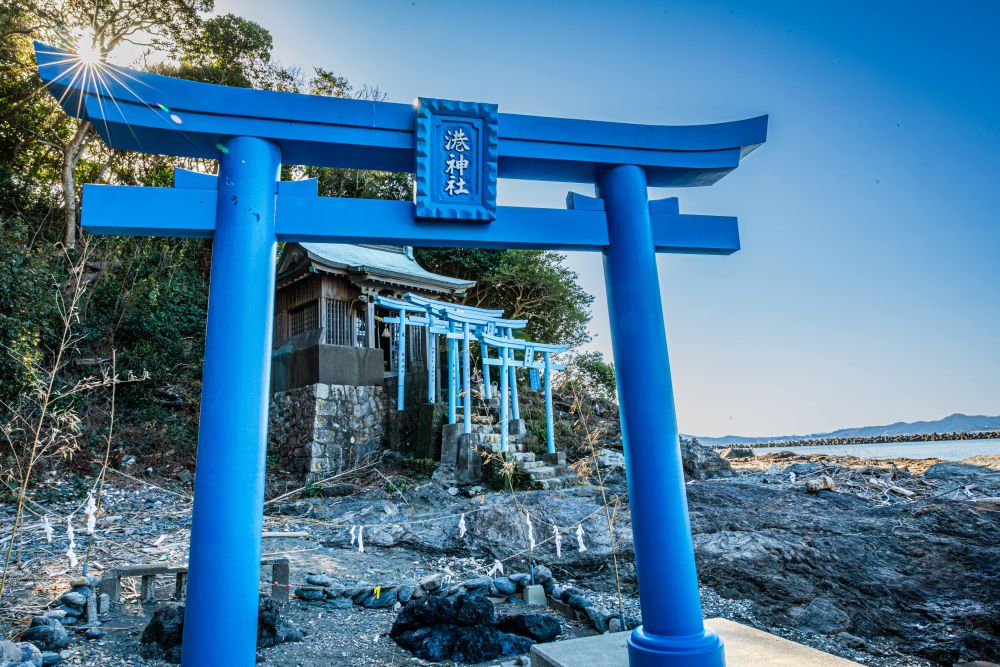
Of Japan’s four main islands, Kyushu is often overlooked by travelers. Those who do make the trip to Kyushu tend to follow the shinkansen from Fukuoka down through Kumamoto to Kagoshima. There is much to recommend on this route, from the delights of Fukuoka’s yatai food stalls and the fiery volcanoes of Mt. Aso, Mt. Unzen, and Sakurajima, to the island’s fascinating history of rebel samurai, foreign trading posts and hidden Christians.
The sparsely populated Miyazaki prefecture dominates the east coast of Kyushu. Almost unknown to international tourists, the region is blessed with stunning natural beauty in the form of steep, rocky peaks, lush forests and crystal-clear rivers and seas. Located on the coast, the seaside city of Nobeoka is an ideal base for exploring varied landscapes while discovering local culture, history and food.
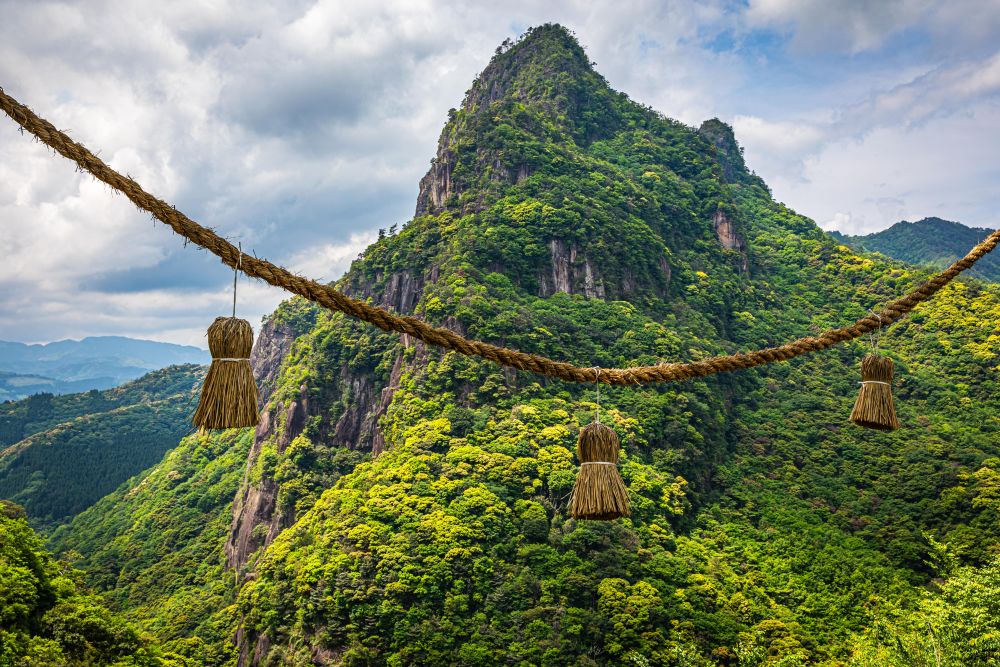
Nobeoka – In Harmony with Nature
Nowhere is the local reverence for nature in Nobeoka more obvious, than the unique torii gate of Minato Shrine. In Japan, torii gates traditionally mark the boundary between the human realm and that of the kami, local gods or spirits. As such, they are often located in areas of particularly distinctive natural beauty.
One of just four blue torii in all of Japan, the torii at Minato Shrine stands at the confluence of three rivers as they flow into cobalt shallows at the edge of the Pacific Ocean. The shrine itself is dedicated to kami of the sea. It has long been the location where the families of fishermen and seafarers come to pray. The torii gate’s shade of blue even matches the hue found on the interior hulls of small local boats.
The coast near Nobeoka boasts several fine beaches – some sandy, some rocky – that offer delights to adventure seekers both above and below the waves. Snorkelers and scuba divers highly regard the waters just off Urashiro (a 20-minute drive from downtown Nobeoka) for their colorful coral and schools of fish. The waves that break on the Miyazaki shores are also famous for having some of the best surfing in Japan.
Those who prefer to view the ocean from dry land will find plenty of scenic drives and cycling routes nearby. If fishing sounds appealing, there are countless places along the coast to stop and cast a line.
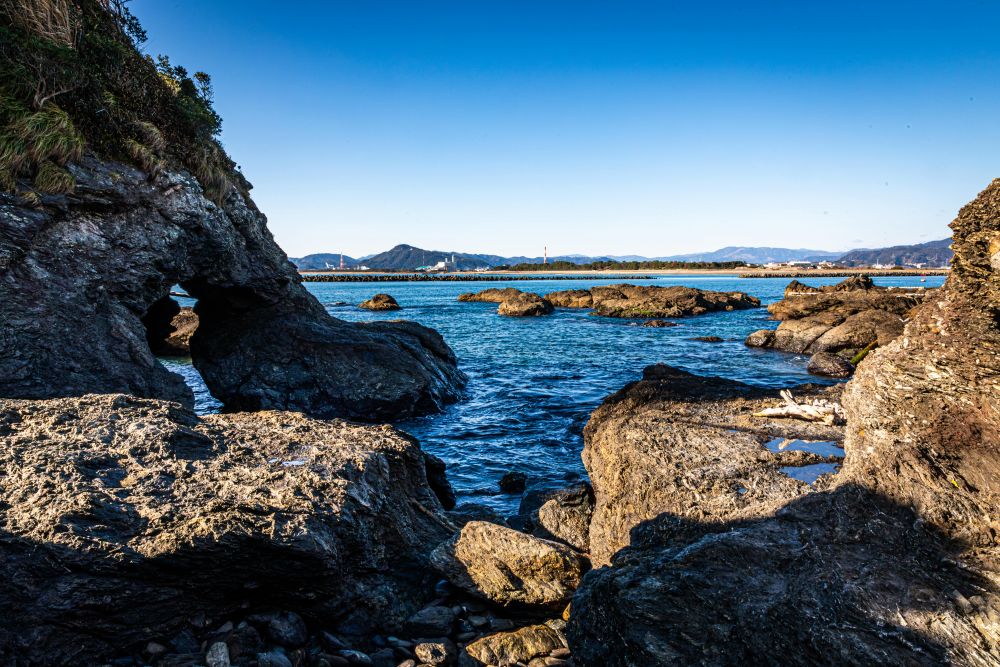
Venturing inland, the land soon rises up into a rugged wilderness of old-growth forests, waterfalls and mountains. The immense Sobo, Katamuki and Okue Biosphere Reserve stretches all the way from the edges of Nobeoka up towards Takachiho.
There are endless opportunities for outdoor enthusiasts and nature lovers to explore the area. Take relaxing nature walks and bird-watching excursions or get more active by hiking and rock climbing. Travelers can see local wildlife such as deer, monkeys and the Japanese serow (a species of mountain goat that looks like an antelope) throughout the region.
The village of Chayama (“Tea Mountain”) is the perfect place for a stroll along green tea fields nestled between mountains. A visit to the breathtaking Mukabaki Falls is well worth the short hike (40 minutes). Continue for another hour to have a view over the waterfalls from the twin peaks of Mt. Mukabaki. More ambitious mountaineers and rock climbers can head for Mt. Hoko (1277 m), a climb of about 3-4 hours (round trip) or Mt. Okue (1,644), which takes 10 hours (round trip).
Be sure to carry proper hiking equipment and clothing when hiking in the mountains (and consider employing a local guide). Camping is also available in season at sites such as the Shishi River Campground near Mt. Hoko.
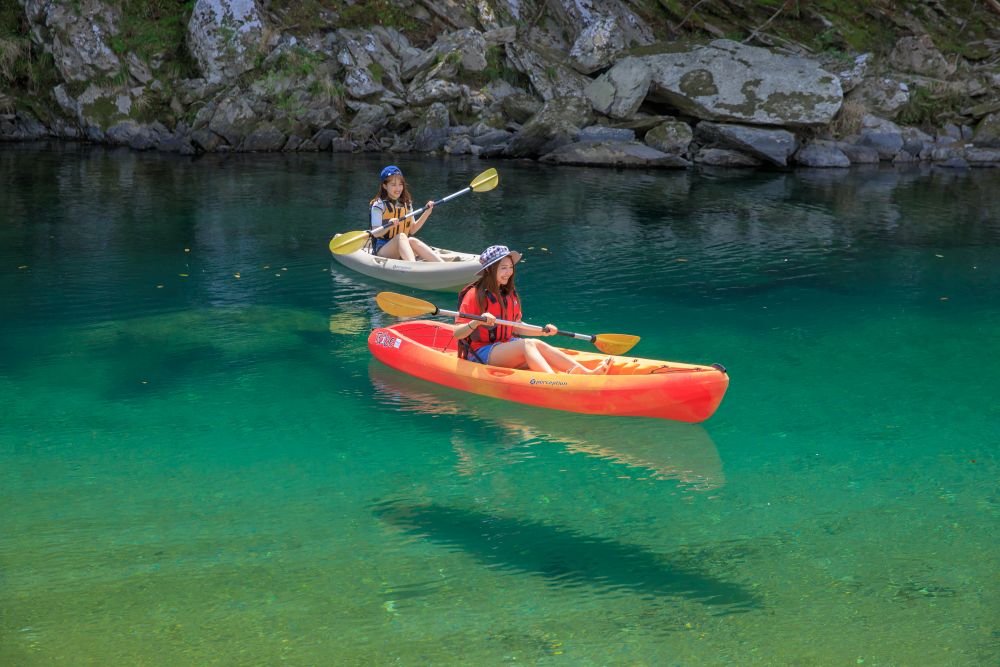
The pristine mountain streams of the Biosphere Reserve are famed for both the clarity and vivid hues of their waters. They are popular among canoeists, kayakers and stand-up paddleboarders (SUP).
The Kogawa River is perfect for boating beginners due to its gentle current. With water so clear, one can count the pebbles on the bottom and view schools of ayu and koi swimming by.
Another famous place to rent small watercraft, albeit slightly further afield, is Takachiho Gorge. Visitors maneuver small rowboats around one another to witness water cascading down the walls of the gorge into the azure river below.
There are many companies in Nobeoka that provide equipment and guides for outdoor activities. For international tourists, Nobestar is probably the best due to its range of activities and ability to assist English speakers. Among its many services, Nobestar offers SUP, surfing and kayak experiences as well as good quality bicycles, fishing gear, rock climbing gear and hiking equipment rentals. Travelers can hire expert guides that will cater to all different fitness levels and ranges of experience. Travelers without vehicles can rely on Nobestar as a great option since they provide pickup and transport services to a region with extremely limited public transportation.
Along with its own charms, Nobeoka makes a great jumping-off point for visits to Takachiho, one of Kyushu’s most popular locations for Japanese tourists (but still relatively unknown to visitors from overseas) due to its association with myths about the creation of Japan, as well as its unique gorge and general natural beauty. From Takachiho, one can also continue up to the Aso Caldera, one of the largest volcanic calderas in the world.
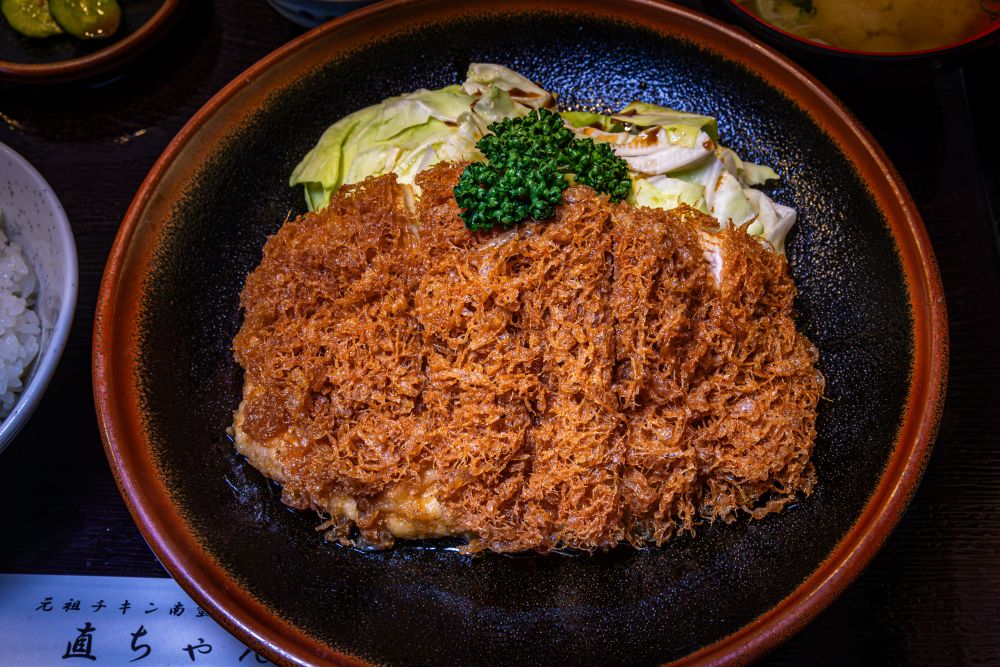
A Treasure Trove of Delicious Local Food
The residents of Nobeoka and its surrounding areas have made the most of the region’s fertile land, favorable climate, and productive seas for centuries, gathering and growing a huge range of sumptuous ingredients to create a rich local food culture.
Itomaki daikon radishes, black pumpkins and sweet potatoes have long been cultivated across Miyazaki prefecture and thus feature in many of the area’s local dishes. Warm, sunny weather throughout much of the year also means that strawberries and mikan (Mandarin oranges), as well as other citrus fruits, grow in abundance.
It is the fruits de mer, however, that feature even more prominently in local cuisine. Local Nobeoka restaurants serve fresh-caught Ise-ebi (spiny lobster) either raw, salt-roasted or added to miso soup when in season (September to March). The prized Awabi (abalone) and mizu-ika squid are delicacies. Delicious local fish include saba (mackerel), urume-iwashi (sardines) and kitauranada-aji (horse mackerel). Restaurants serve grilled or deep-fried small river fish known as ayu (sweetfish). Observe the fascinating traditional method of catching them in bamboo traps at several locations near Nobeoka.
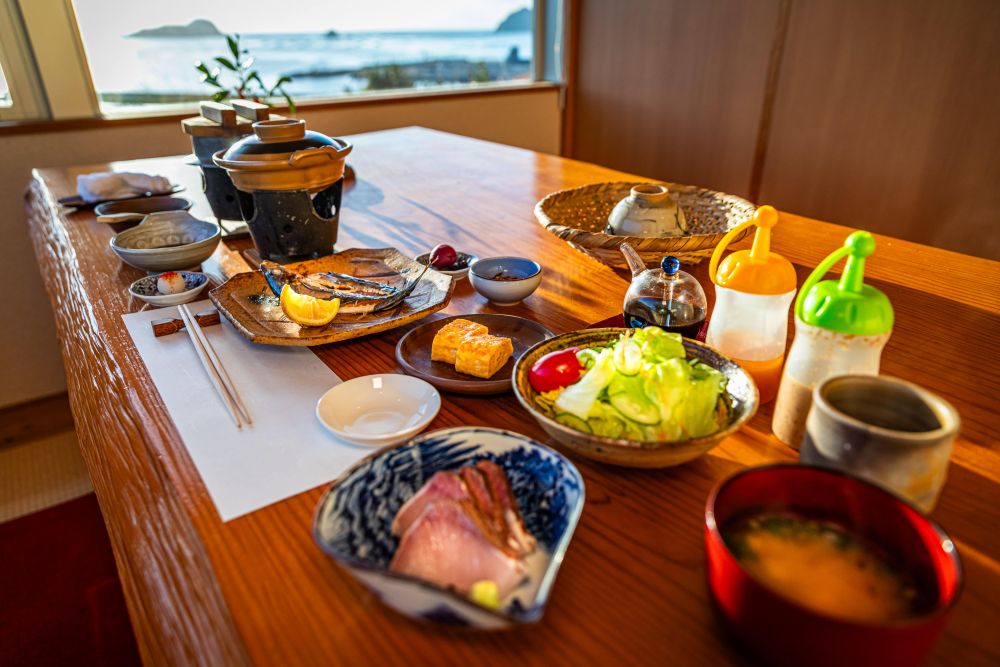
Perhaps somewhat surprisingly, Nobeoka has also become known nationwide for the quality of its jidori chicken. While jidori translates literally as “local chicken,” a better reference for visitors from other countries would be something like “free-range.” Leaner than its factory-bred cousins, one can enjoy jidori in many guises, with yakitori skewers grilled over hot coals being a popular option. The best-known local chicken dish, however, was invented in Nobeoka. Chicken nanban: a deep-fried chicken cutlet that somewhat resembles tonkatsu.
Most often, people soak chicken nanban in a sweet-and-sour sauce or serve it with homemade tartar sauce for dipping. It is typically accompanied by rice, pickles and miso soup. The name nanban (“southern barbarians”) stems from the Japanese word used to describe Europeans in the earliest days of contact between Japan and Europe in the 1500s. If the appellation “southern” is confusing given Europe’s northerly location, keep in mind the direction from which these early foreign visitors were approaching Japan!
There are many places around Nobeoka where travelers can eat chicken nanban, but the most famous is probably Naochan. Located just five minutes on foot from Nobeoka Station, there are rumors that Naochan is one of the originators of the dish.
Those in need of a little spice in their lives (and diets) can opt for a local specialty. A spicy soup, known as karamen, made from ground meat, eggs, chives and plenty of garlic and chili peppers. The best place to enjoy karamen is Karamen Honpo Sayaka in downtown Nobeoka.
For a truly traditional local culinary experience, seek out hiyajiru, a cold miso soup prepared with fish stock, tofu and cucumber best enjoyed poured over rice. It is often said that no two families in Miyazaki prefecture make it the same!
Nobeoka is located on the east coast of Kyushu; approximately 1 hour from Miyazaki city, 2 hours from Oita by express train, or 5 hours from Fukuoka by train. From Tokyo, it is a 2 hour flight to Miyazaki Airport or Oita Airport.
For further information, please refer to the local tourism websites Explore Nobeoka and Sobo, Katamuki and Okue Biosphere Reserve. For equipment rentals and expert guides, please visit the Nobestar website.
